Subclavian artery
Subclavian artery , a. Subclavia, steam room. Subclavian arteries begin in the anterior mediastinum: the right artery in the brachiocephalic trunk, the left one directly from the arch of the aorta, therefore it is longer than the right one: the intrathoracic part of it lies behind the left brachiocephalic vein, v. Brachiocephalica sinistra.

The subclavian artery goes upward and laterally, to the upper aperture of the thorax, forming a slightly convex arc that runs around the dome of the pleura and the apex of the lung, leaving a slight depression on the latter.
Having reached the 1st rib, the subclavian artery penetrates into the interstitial space formed by the adjacent surfaces of the anterior and middle stair muscles, and passes along the 1st rib. Above it in the indicated interval is the brachial plexus.
On the upper surface of the 1st rib, at the site of the artery, a groove is formed - the groove of the subclavian artery.
Having rounded the rib in the interstitial space, the subclavian artery passes under the collarbone and enters the axillary cavity, where it receives the name of the axillary artery, a. Axillaris.
In the subclavian artery, three sections are topographically distinguished: the first - from the place of origin to the interstitial space, the second - in the interstitial space and the third - from the interstitial space to the upper border of the axillary
I. Vertebral artery , a. Vertabralis, departs from the subclavian artery immediately after exiting it from the chest cavity. In its turn, the artery is divided into four parts. Starting from the supermedial wall of the subclavian artery, the vertebral artery is directed upward and somewhat posteriorly, located behind the common carotid artery along the outer edge of the long neck muscle (the pre-vertebral part, pars prevertebralis).

Then it enters the opening of the transverse process of the sixth cervical vertebra and rises vertically through the same holes of all cervical vertebrae [transverse-process (cervical) part, pars transversaria (cervicalis)].
Exiting the opening of the transverse process of II cervical vertebra, the vertebral artery turns outward; Coming up to the opening of the transverse process of the atlant, goes upward and passes through it (the atlant part, pars atlantis). Then follows medially in the sulcus of the vertebral artery on the upper surface of the atlant, turns upward and, perforating the posterior atlanto-occipital membrane and hard shell of the brain, enters through the large occipital opening into the cranial cavity, into the subarachnoid space (intracranial part, pars intracranialis).
In the cranial cavity, heading to the ramp upward and somewhat anteriorly, the left and right vertebral arteries converge, following the surface of the medulla oblongata; At the rear edge of the bridge of the brain are connected to each other, forming one unpaired vessel - the basilar artery, a. Basilaris. The latter, continuing its way along the slope, adjoins the basilar furrow, the lower surface of the bridge and at its anterior margin is divided into two - right and left - posterior cerebral arteries.
The following branches extend from the vertebral artery:

1. Muscular branches, rr. Musculares, to the invertebrate muscles of the neck.
2. Spinal (branch) branches, rr. Spinales (radiculares), depart from that part of the vertebral artery that passes through the vertebral arterial opening. These branches pass through the intervertebral openings of the cervical vertebrae into the vertebral canal, where the spinal cord and its membranes are blood flowed.
3. Posterior spinal artery, a. Spinalis posterior, steam, departs from each side of the vertebral artery in the cranial cavity, somewhat above the large occipital orifice. It is directed downward, enters the spinal canal and along the back surface of the spinal cord, along the line of entry of the posterior rootlets (sulcus lateralis posterior), reaches the region of the cauda equina; Blood supply to the spinal cord and its membranes.
The posterior cerebrospinal arteries anastomose with each other, as well as with spinal (root) branches from vertebral, intercostal and lumbar arteries.
4. Anterior spinal artery, a. Spinalis anterior, begins from the vertebral artery above the anterior margin of the large occipital foramen.
It goes down, at the level of the crossroads of the pyramids it connects to the same-named artery of the opposite side, forming one unpaired vessel. The latter descends along the anterior middle slot of the spinal cord and ends at the end of the filum; Blood supply to the spinal cord and its membranes and anastomose with spinal (root) branches from vertebral, intercostal and lumbar arteries.
5. Posterior cerebellar artery, a. Inferior posterior cerebelli, branched in the lower-posterior part of the cerebellar hemispheres. The artery gives off a number of small branches: to the vascular plexus of the fourth ventricle - the villous branch of the fourth ventricle, r. Choroideus ventriculi quarti; To the medulla oblongata - lateral and medial cerebral branches (branches to the medulla oblongata), rr. Medullares laterales et mediales (r. Ad medullam oblongatum); To the cerebellum-a branch of the amygdala of the cerebellum, r. Tonsillae cerebelli.
From the inside of the vertebral artery, the meningeal branches branch out, rr. Meningei, which blood supply the dura mater of the posterior cranial fossa.
The following branches branch from the basilar artery.

1. Artery of the labyrinth, a. Labyrinthi, is guided through the inner auditory aperture and passes along with the pre-cochlear nerve, n. Vestibulocochlearis, to the inner ear.
2. Anterior lower cerebellar artery, a. Inferior anterior cerebelli, - the last branch of the vertebral artery, can also depart from the basilar artery. Blood supply to the anterior section of the cerebellum.
3. Artery of the bridge, aa. Pontis, enter the substance of the bridge.
4. Upper cerebellar artery, a. Superior cerebelli, starts from the basilar artery at the anterior edge of the bridge, is directed outward and back around the legs of the brain and branches into the upper surface of the cerebellum and the vascular plexus of the third ventricle.
5. Middle-cerebral arteries, aa. Mesencephalicae, depart from the distal part of the basilar artery, symmetrically on 2 - 3 trunks to each leg of the brain.
6. Posterior spinal artery, a. Spinalis posterior, a pair, lies internally from the posterior root along the posterolateral groove. It starts from the basilar artery, is directed downward, anastomosing with the same-named artery of the opposite side; Blood supply to the spinal cord.
Posterior cerebral arteries, aa. Cerebri posteriores, are sent first to the outside, located above the hint of the cerebellum, which separates them from located below the upper cerebellar arteries and basilar artery. Then wrapped back and up, skirting the outer periphery of the legs of the brain and branching out on the basal and partly on the upperlateral surface of the occipital and temporal lobes of the cerebral hemispheres. They give branches to the indicated parts of the brain, as well as into the rear perforated substance to the nodes of the large brain, the legs of the brain - leg branches, rr. Pedunculares, and the vascular plexus of the lateral ventricles - cortical branches, rr. Corticales.

Each posterior cerebral artery is conditionally divided into three parts: precombational, going from the beginning of the artery to the point of confluence of the posterior connective artery, as well. Communicans posterior; Postcommunicational, which is a continuation of the previous one and passes into the third, final (cortical) part, which gives branches to the lower and medial surfaces of the temporal and occipital lobes.
A. From the pre-communication part, pars precommunicalis, the posterior medial central arteries, aa. Centrales posteromediales. They penetrate through the rear perforated substance and disintegrate into a series of small stems; Blood supply to the ventrolateral nuclei of the thalamus.
B. Postcommunicational part, pars postcommunicalis, gives the following branches.
1. Zadnelateralnye central arteries, aa. Centrales posterolaterales, are represented by a group of small branches, some of which supply blood to the lateral geniculate body, and some end in the ventrolateral nuclei of the thalamus.
2. Thalamic branches, rr. Thalamici, small, often depart from the previous ones and supply blood to the lower medial divisions of the thalamus.
3. Medial posterior villous branches, rr. Choroidei posteriores mediales, are directed to the thalamus, blood supplying its medial and posterior nuclei, approach the vascular plexus of the third ventricle.
4. Lateral posterior villous branches, rr. Choroidei posteriores laterales, approach the posterior parts of the thalamus, reaching the vascular plexus of the third ventricle and the external surface of the epiphysis.
5. Leg branches, rr. Pedunculares, blood supply the middle brain.
B. The terminal part (cortical), pars terminalis (corticalis), posterior cerebral artery, gives two occipital arteries - lateral and medial arteries.
1. Lateral occipital artery, a. Occipitalis lateralis, goes posteriorly and outwards, and branching into the front, intermediate and posterior branches, sends them to the lower and partly medial surfaces of the temporal lobe:
A) anterior temporal branches, rr. Temporales anteriores, depart in quantity of 2 - 3, and sometimes the common trunk and then, branching, are directed anteriorly, they go along the lower surface of the temporal lobe. Blood supply the anterior parts of the paraphippocampal gyrus, reaching the hook;
B) temporal branches (medial interstitial), rr. Temporales [intermedii mediales], are directed downwards, distributed in the region of the lateral occipital gyrus, and reach the lower temporal gyrus;
C) posterior temporal branches, rr. Temporales posteriores, only 2-3, are directed downwards, pass along the lower surface of the occipital lobe and are distributed in the region of the medial occipital-temporal gyrus.
2. The medial occipital artery , a. Occipitalis medialis, is actually a continuation of the posterior cerebral artery. From it leaves a series of branches to the medial and lower surfaces of the occipital lobe:
A) dorsal branch of corpus callosum, r. Corporis callosi dorsalis, a small branch, is directed upward along the posterior part of the cingulate gyrus and reaches the corpus callosum, supplying blood to this area, anastomosing with terminal branchings of the callous-marginal artery, a. Callosomarginalis;
B) Parietal branch, r. Parietalis, can depart both from the main trunk, and from the previous branch. It is directed somewhat backward and upward; Blood supply to the area of the medial surface of the temporal lobe, in the region of the anterior part of the anterior part;
C) parieto-occipital branch, r. Parietooccipitalis, moving from the main trunk to the top and back, lying along the furrow of the same name, along the anterior margin of the wedge; Blood supply this area;
D) the spur branch, r. Calcarinus, - a small branch, departs from the medial occipital artery posteriorly and downwards, repeats the course of the furrow groove. Passes along the medial surface of the occipital lobe; Blood supply to the lower part of the wedge;
E) occipital-temporal branch, r. Occipitotemporalis, departs from the main trunk and is directed downwards, back and forth, lying along the medial occipital-temporal gyrus; Blood supply to this area.

II. Internal thoracic artery, a. Thoracica interna, starts from the inferior surface of the subclavian artery, at the level of the vertebral artery spasm; Going down behind the subclavian vein, passes through the upper aperture of the thorax into the chest cavity and descends parallel to the edge of the sternum along the posterior surface of cartilages of the I-VII ribs, being covered with the transverse chest muscle and the parietal pleura leaf.
At the level of the VII rib, the inner thoracic artery is divided into the muscular-diaphragmatic artery, as well. Musculophrenic, and upper epigastric artery, a. Epigastrica superior. On its way gives a number of branches.
1. Mediastinal branches, rr. Mediastinales, - this is 2-3 thin trunks; Blood supply to the anterior parts of the pericardium and perigrudinous lymph nodes.
2. Thymus branches, rr. Thymici, supply the corresponding portion of the thymus gland.
3. Tracheal branches, rr. Tracheales, are thin stems; Blood supply the middle section of the trachea.
4. Bronchial branches, rr. Bronchiales, fickle; Approach the end portion of the trachea and the corresponding main bronchus.
5. Pericardial diaphragmatic artery, a. Pericardiacophrenica, is a fairly potent vessel. It begins at level I of the rib and follows along with the diaphragmatic nerve to the diaphragm, sending the branches along the path to the pericardium.
6. Sternal branches, rr. Sternales, approach the posterior surface of the sternum.
7. The perforating branches, rr. Perforantes, perforate 6 to 7 upper intercostals and give branches to large and small pectoral muscles.
From the two - three perforating branches branch the branches of the mammary gland, rr. Mammarii, which are distributed both in the gland itself and in the tissues surrounding it.
8. Front intercostal branches, rr. Intercostales anteriores, two, are directed to the six upper intercostal spaces, where, following along the upper and lower edges of the ribs, they anastomose with the posterior intercostal arteries, aa. Intercostales posteriores, from the thoracic part of the aorta. Intercostal branches running along the lower edges of the ribs are more developed.
9. Lateral rib branch, r. Costalis lateralis, unstable, may depart from the subclavian artery. Goes down behind the costal arch outwards from a. Thoracica interna and gives small twigs to the intercostal muscles.
10. Muscular-diaphragmatic artery, a. Musculophrenica, goes along the costal arch along the line of attachment of the rib side of the diaphragm to the thorax. Gives branches to the diaphragm, abdominal muscles, as well as anterior intercostal branches, which (five in total) are directed to the lower intercostal spaces.
11. Upper epigastric artery, a. Epigastrica superior, follows down, perforates the back wall of the vagina of the rectus abdominis, is located on the back surface of this muscle and at the level of the navel it is anastomosed with the lower epigastric artery, as well. Epigastrica inferior (branch of external iliac artery, a. Iliaca externa). Sends branches to the rectus abdominis muscle and its vagina, as well as to the crescent ligament of the liver and umbilical cord skin.

III. Shchitosheyny trunk , truncus thyrocervicalis, up to 1.5 cm long, departs from the anteroposterior surface of the subclavian artery before its entry into the interstitial space.
1. Lower thyroid artery, a. Thyroidea inferior, is directed upward and medially along the anterior surface of the anterior staircase, behind the internal jugular vein and common carotid artery. Having formed an arc at level VI of the cervical vertebra, it approaches the posterior surface of the lower part of the lateral lobe of the thyroid gland. Here the artery gives glandular branches to the gland substance, rr. Glandulares, which anastomose on the surface and inside the gland with branches of the upper thyroid artery (branch of the external carotid artery). In addition, the lower thyroid artery sends tracheal branches to the trachea, rr. Tracheales. Often they begin with the esophagus.
Esophageal branches, rr. Esophagei, thin, approach the initial section of the esophagus, pharyngeal branches, rr. Pharyngeales, only two to three, go to the pharynx, and the lower laryngeal artery, a. Laryngea inferior, accompanying the guttural recurrent nerve, approaches the larynx. The lower laryngeal artery enters the laryngeal wall and forms an anastomosis with the upper laryngeal artery, originating from the upper thyroid artery.
2. Ascending cervical artery, a. Cervicalis ascendens, follows up the front surface of the front staircase and the muscle that lifts the scapula, located medially from the diaphragmatic nerve. The ascending cervical artery gives the muscle branches to the pre-vertebral muscles and deep muscles of the nape and spinal branches, rr. Spinales.
3. Supluscular artery, a. Suprascapularis, goes outward and somewhat downward, located behind the clavicle, in front of the front staircase, giving off a small acromial branch, r. Acromialis. Then the artery in the course of the lower abdomen of the scapular-hyoid muscle reaches the scrap of the scapula and passes over the upper transverse ligament of the scapula into the pit. Here he gives the branches to the supraspinous muscle, then rounds the neck of the scapula and enters the subacute fossa, where he sends the branches to the muscles lying here and anastomizes with the artery surrounding the scapula, as well. Circumflexa scapulae (a .axillaris branch), and a. Transversa colli (a. Subclavia branch).

Branches of the second subclavian artery . In the second department from the subclavian artery, only one branch branches off - the rib-cervical trunk.
The costal cervical trunk , truncus costocervicalis, begins in the interstitial space from the posterior surface of the subclavian artery and, following the back, is immediately divided into the following branches.
1. Deep neck artery, a. Cervicalis profunda, is directed back and somewhat upward, passes between the neck of the 1st rib and the transverse process of the VII cervical vertebra, leaves the neck and is upward to the 2nd cervical vertebra; Blood supply to the deep muscles of the posterior region of the neck and sends branches to the spinal cord into the vertebral canal. Its branches anastomose with branches from a. Vertebralis, a. Cervicalis ascendens and a. Occipitalis.
2. The highest intercostal artery, a. Intercostalis suprema, goes down, crosses the anterior surface of cervix I, and then II edges. Two arteries depart from it: a) the first posterior intercostal artery, a. Intercostalis posterior prima, located in the first intercostal space; B) the second posterior intercostal artery, a. Intercostalis posterior secunda, located in the second intercostal space.

Both arteries, following in the intercostal spaces, connect with the anterior intercostal branches from a. Thoracica interna. From each artery, dorsal branches branch out, rr. Dorsales, suitable for the muscles of the back.
Branches of the third subclavian artery. In the third department, from the subclavian artery, only one branch usually extends - the transverse artery of the neck.
The transverse artery of the neck , a. Transversa cervicis, begins from the subclavian artery after its exit from the interstitial space. It is directed back and to the outside, passes between the branches of the brachial plexus and, passing the middle and back stair muscles, is located under the muscle that lifts the scapula. Here, at the upper angle of the scapula, the transverse artery of the neck gives off three branches.
1. Surface branch (superficial cervical artery), r. superficialis (a. cervicalis superficialis), делится на восходящую ветвь, r. ascendens, и нисходящую ветвь, r. descendens, следующие в латеральном направлении впереди передней лестничной мышцы, плечевого сплетения и мышцы, поднимающей лопатку.
В наружном отделе латерального треугольника шеи артерия скрывается под трапециевидной мышцей, кровоснабжает ее, а также посылает ветви к коже и лимфатическим узлам надключичной области.
2. Глубокая ветвь (дорсальная артерия лопатки), r. profundus (a. dorsalis scapulae), направляется несколько кзади и книзу, посылая веточки к мышцам плечевого пояса, залегающим на задней поверхности лопатки.
3. Дорсальная лопаточная артерия, a. scapularis dorsalis, следует под ромбовидные мышцы и, располагаясь вдоль медиального края лопатки, между прикреплением ромбовидных мышц и передней зубчатой мышцы, достигает широкой мышцы спины. Кровоснабжает указанные мышцы, акромиально-ключичный сустав за счет акромиальной ветви, r. асгоmialis, а также посылает веточки к коже этой области, которые анастомозируют с концевой частью грудоспинной артерии, a. thoracodorsalis. Дорсальная лопаточная артерия может отходить непосредственно от подключичной артерии.

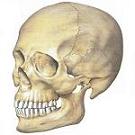
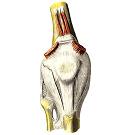

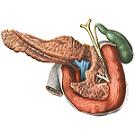
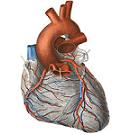

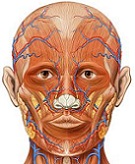

Comments
When commenting on, remember that the content and tone of your message can hurt the feelings of real people, show respect and tolerance to your interlocutors even if you do not share their opinion, your behavior in the conditions of freedom of expression and anonymity provided by the Internet, changes Not only virtual, but also the real world. All comments are hidden from the index, spam is controlled.